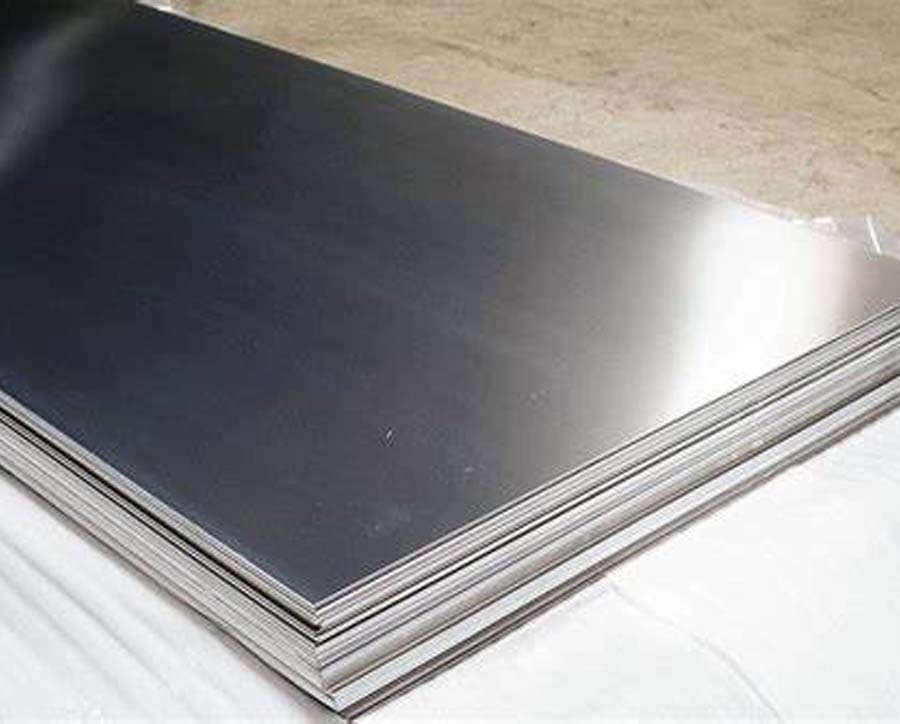Stainless steel is an incredibly versatile material that has been used across various industries for its excellent strength, durability, and resistance to corrosion. Among the many variants of stainless steel, the 321 and 321H stainless steel sheets are widely known for their exceptional properties and applications in high-temperature environments. However, they have distinct differences that can influence their suitability for specific applications. This blog explores the differences between 321 stainless steel sheet and 321H stainless steel sheet, with a focus on their properties, uses, and why it is important to choose the right type.
What is Stainless Steel 321?
Stainless Steel 321 is an austenitic grade of stainless steel, and it is known for its excellent resistance to intergranular corrosion, especially at elevated temperatures. The addition of titanium (Ti) in the alloy helps in preventing carbide precipitation and ensures stability at high temperatures, making it a preferred choice for applications where the material is exposed to heat. It is typically used in applications where high-temperature stability is critical, such as in the aerospace, chemical, and power generation industries.
What is Stainless Steel 321H?
On the other hand, Stainless Steel 321H is a high-carbon version of 321 stainless steel. The increased carbon content enhances its strength and resistance to creep, which is an important factor when the material is exposed to high pressure and temperatures. It is particularly beneficial in applications that involve extreme thermal and mechanical stresses. 321H is often employed in heat exchangers, refinery equipment, and exhaust systems, where higher strength and performance at elevated temperatures are required.
Key Differences Between Stainless Steel 321 and 321H
1. Carbon Content
The most significant difference between the two grades lies in their carbon content. 321H contains a higher level of carbon compared to 321. While the carbon content in 321 is typically around 0.08%, in 321H, the carbon content is higher, usually between 0.04% to 0.10%. This higher carbon content increases its strength and makes it suitable for high-temperature applications where structural integrity must be maintained over time.
2. Strength and Creep Resistance
Due to the higher carbon content, 321H has improved strength and better resistance to creep, a phenomenon where a material deforms over time under high stress and temperature. This makes 321H a better choice for applications subjected to extreme temperatures and mechanical stresses, such as high-pressure equipment and reactors.
3. Applications
Both 321 and 321H are used in high-temperature applications, but 321H is the preferred choice in environments where the material experiences prolonged exposure to high temperatures and mechanical stress. For example, 321 is used in applications such as aircraft exhaust systems, heat exchangers, and chemical processing equipment, where moderate heat resistance is sufficient. In contrast, 321H is ideal for applications in power plants, petroleum refining, and equipment exposed to higher pressures and temperatures.
4. Welding and Fabrication
Both 321 and 321H stainless steels are highly weldable. However, due to the higher carbon content in 321H, it has a slightly greater tendency to form carbide precipitates during welding. This can lead to issues such as reduced corrosion resistance in the heat-affected zone (HAZ). However, special care during welding, such as using low-carbon filler materials and proper heat management, can mitigate these risks. While 321 can be welded in a similar manner, 321H requires more attention to ensure that the material's strength and corrosion resistance are maintained after welding.
5. Corrosion Resistance
Both grades offer excellent resistance to corrosion, especially in environments involving high-temperature exposure. However, 321H’s higher carbon content makes it more susceptible to carbide precipitation in certain conditions, which can slightly reduce its overall corrosion resistance compared to 321. But despite this, 321H still performs well in environments where it is exposed to sulfuric, phosphoric, and nitric acids, as well as other high-temperature corrosive agents.
6. Cost
321H, due to its higher carbon content and superior strength, can be more expensive than 321. The increased cost of 321H is justified by its enhanced performance in extreme conditions. However, 321 stainless steel remains a more cost-effective option for applications where extreme temperatures or high mechanical stresses are not as prevalent.
Applications of Stainless Steel 321 and 321H
321 Stainless Steel Applications:
- Aircraft exhaust systems
- Chemical and food processing equipment
- Heat exchangers and condensers
- Furnace parts and high-temperature reactors
- Exhaust manifolds and other automotive applications
- Aerospace and marine engineering
321H Stainless Steel Applications:
- Power generation equipment
- Heat exchangers in refineries
- Petrochemical processing equipment
- Pressure vessels and piping systems
- Equipment in high-pressure and high-temperature environments
- Steam turbines and power plant components
Why Choose the Right Stainless Steel Plate?
When it comes to selecting stainless steel for high-temperature applications, it is essential to choose the right type of material. Both 321 and 321H stainless steel plates offer great benefits, but the choice depends on the application requirements, including the temperature, mechanical stress, and environment in which the material will operate.
Choosing Stainless Steel 321 Plates Manufacturers
When purchasing 321 or 321H stainless steel plates, it is important to choose reliable manufacturers that provide high-quality, certified products. Trusted stainless steel 321 plates manufacturers offer plates that meet global standards and are available in various thicknesses and sizes, depending on your specific needs. They also provide precise fabrication services to ensure the material performs optimally in your application.
Conclusion
In conclusion, both 321 and 321H stainless steel sheets have their own unique features and benefits. While 321 stainless steel is perfect for moderate temperature applications, 321H, with its higher carbon content, is the ideal choice for applications involving high-pressure systems, extreme temperatures, and mechanical stresses. Whether you are selecting 321 or 321H stainless steel plates, understanding these differences will help ensure that you make the right decision for your needs. By choosing the appropriate material, you can enhance the efficiency, durability, and performance of your equipment, even in the most demanding environments.
For top-quality stainless steel 321 plates and expert guidance, reach out to trusted stainless steel manufacturers.





Comments